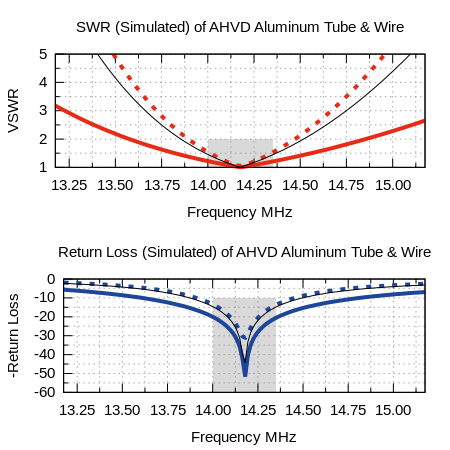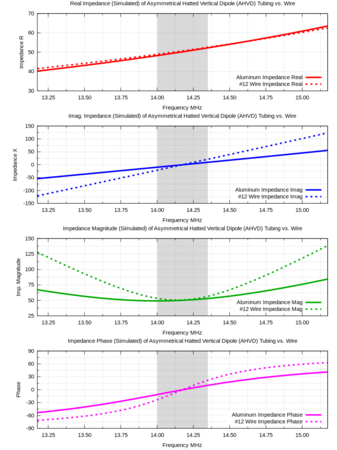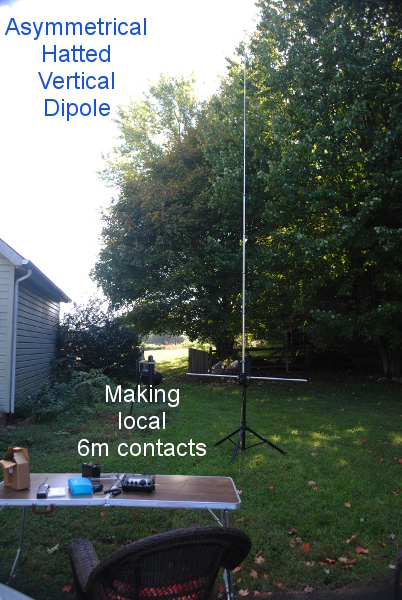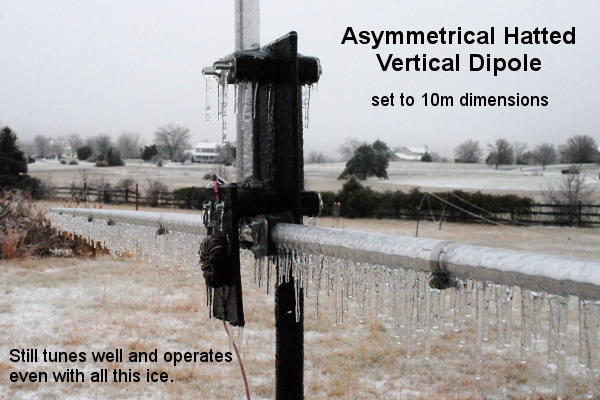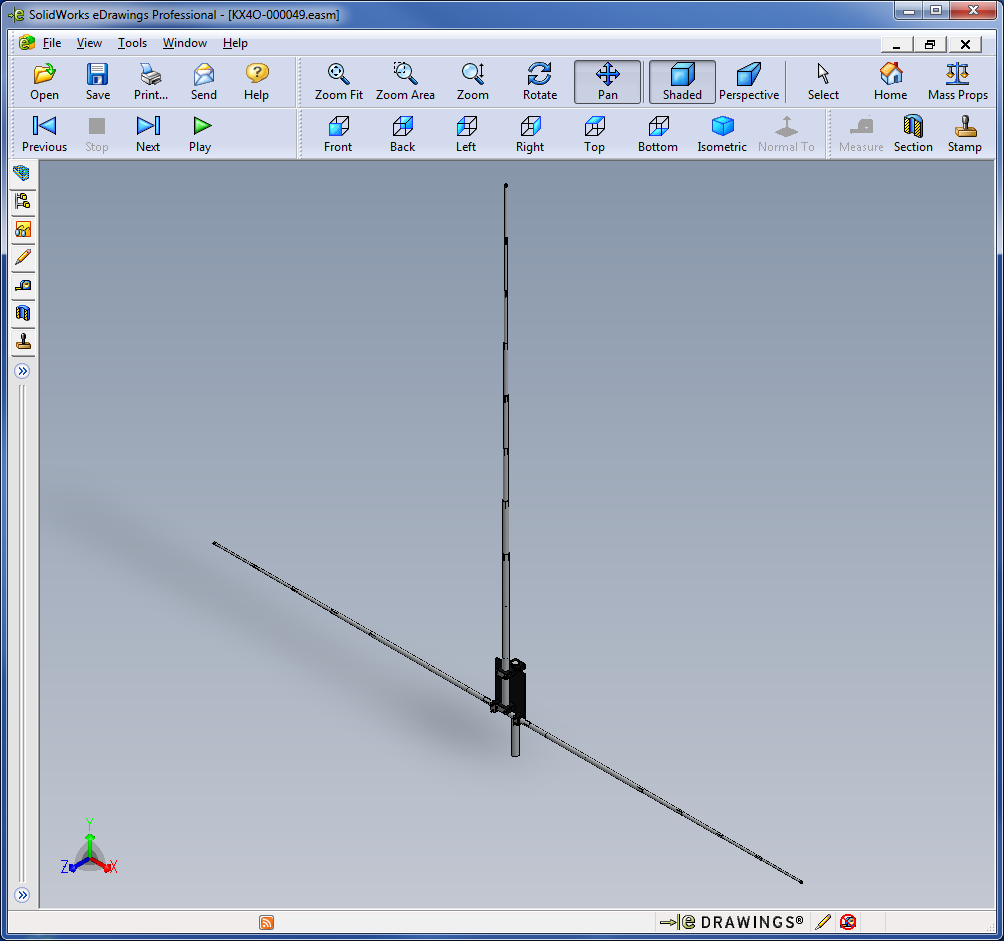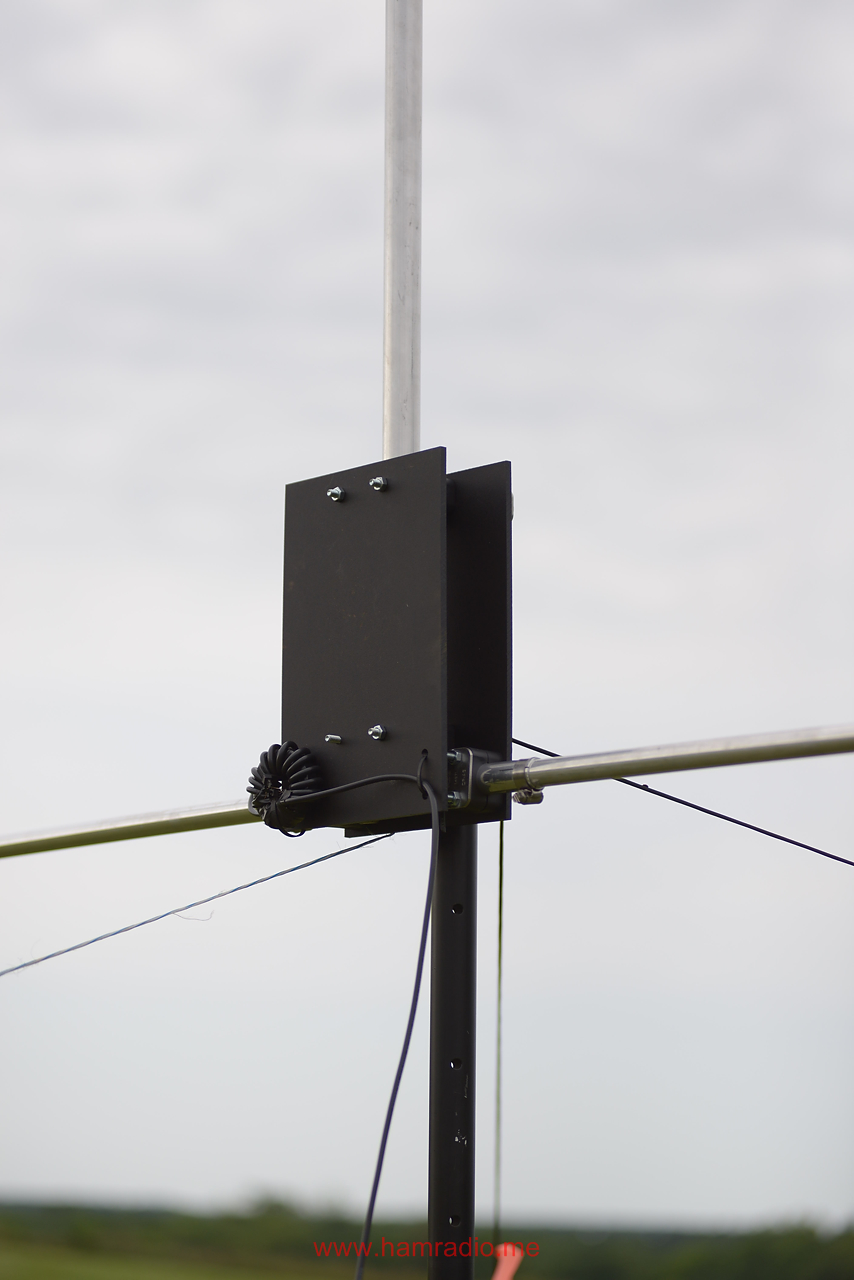Thanks for stopping by my two tables at FrostFest 2014 in Richmond. I enjoyed chatting with many of you about the Asymmetrical Hatted Vertical Dipole and a great many other subjects.
I had two tables in Henrico Hall where you could see and touch the Asymmetrical Hatted Vertical Dipole (AHVD).
Here is a pic of activity at these tables…
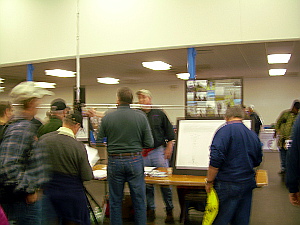
Many of you asked why I rented two tables to simply reveal and discuss this antenna concept. I’m still not sure myself, but I think enough new folks were introduced to this design and that’s good enough for me.
Search for AHVD on this site to read the several articles about this antenna.
Many folks question the broad bandwidth of the AHVD. Most everyone assumes the larger diameter conductors play a significant role including myself. However, I never gave it much thought as my selection of aluminum tubing was more for structural than electrical reasons.
To examine the issue I ran some simulations of the AHVD from my main model containing tapered aluminum vs. the same topology with #12 AWG wire. I re-optimized the wire model to bring it back into resonance. The following graph shows the SWR and Return Loss of both models plus a simple wire dipole (with 72 ohm reference impedance) as a reference. (Click on the image for a full size graph)
The shaded regions show what many call an acceptable antenna impedance of under 2.0 SWR or better than 10 dB Return Loss.
It’s quite clear from the graph the thicker conductors broaden the bandwidth considerably. The wire AHVD and the reference dipole easily cover the whole 20m band. It seems the sturdy construction of the aluminum creates an antenna more tolerant of detuning circumstances.
Another person asked what the imaginary part of the impedance is with an eye towards debunking my claims as fantastic. Despite the fact this antenna exhibits less than 0 dBi of gain and certainly isn’t fantastic, here is a graph to click on with more details on the Real and Imaginary components of the Aluminum Tube vs. Wire AHVD antenna…
Yes you can adjust the vertical and radial lengths to find close to the 50 +j0 point.
Great questions from the group.
Thanks again for stopping by and saying hello. It made the trip very much worthwhile.
John
